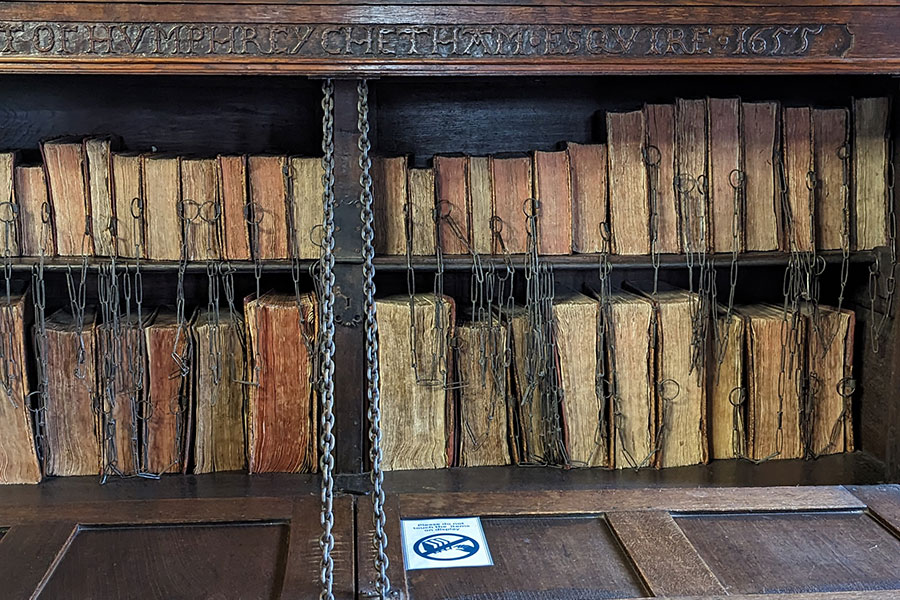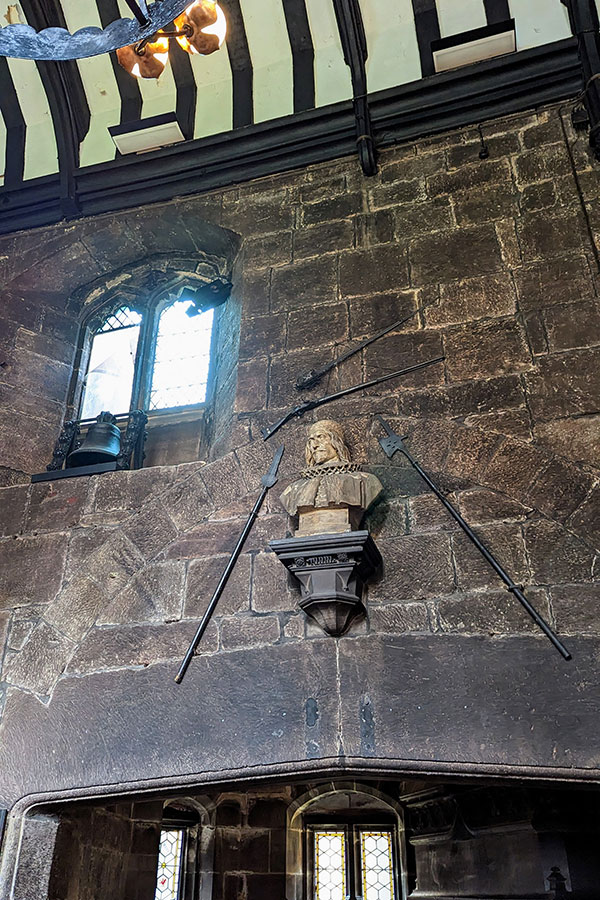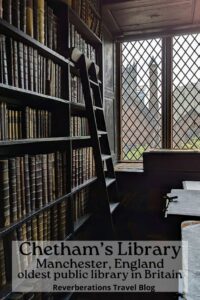Manchester, England, is world-renowned for many things: music (Oasis, Joy Division, the Smiths), football (or soccer, if you prefer), and being the first industrialized city in the world.
But the city is also home to Chetham’s Library, the oldest free public reference library in the English-speaking world. The library has been a source of knowledge for countless individuals over the centuries. It even attracted Karl Marx and Friedrich Engels, who did research at Chetham’s for their publication The Communist Manifesto.
Nearly four centuries after the library’s founding, it remains in use. Visitors can learn the library’s history on a tour, you can walk up and down the aisles of bookshelves and wonder about the conversations that Marx and Engels may have had.
A Brief History of Chetham’s Library
In 1653, Humphrey Chetham died. Chetham was a wealthy textile merchant and financier in Manchester. He had such power and esteem than he was once offered knighthood. But in a twist, he refused the knighthood and was fined for doing so! (Neither the spelling nor the pronunciation is standardized but “Cheat-em” is an acceptable pronunciation — and the one used by the tour guide when I visited.)
In his will, Chetham left money for several ambitious projects to benefit his community. For one, the will established a school for forty boys from financially disadvantaged backgrounds. It also funded five chained libraries for local Manchester churches. At the time, books were so valuable that they would be chained to bookshelves to prevent theft.
Another part of the will established Chetham’s Library, the first library for independent study in the north of England. 24 feoffees, or governor trustees selected by Chetham, sourced the books which covered a wide range of topics. Chetham’s instruction to the collection’s librarian was that the books were “for the use of schollars [sic] and others well affected” and “to require nothing of any man that cometh into the library.”
Like the local libraries these books, too, were initially chained to the shelves. However, this practice was abandoned in the mid-18th century when gates were erected around the building.
The Medieval Buildings
As part of their task to create the library, the governors purchased a 15-century manor house. The building was derelict and has quite a history.
The location has been occupied since Roman times. Henry V gave a license to Thomas de la Warre, the Lord of Manchester and a parish rector, to convert his parish to a collegiate church. The new organization included about 20 individuals.
As such, they needed places to live and work so De la Warre gave up his manor house. The complex had a large hall and rooms for each fellow as well as the warden. At the time, aside from the church, it was the largest building in Manchester.
When the governors finally did acquire the buildings in the late 17th century, renovations were needed. After its time as a college, it had served as a prison and an arsenal during the English Civil War.
The rooms of Chetham’s Library tell different stories. The three-sided cloister that runs around a courtyard features large, thick stone walls and dozens of windows. But at the time, the windows would have merely been openings without glass. Upstairs, the audit room features rich wood paneling and detailed plasterwork and in the reading room, with its famous alcove, stands the original round table used by the governors.
Touring Chetham’s Library
To this day, researchers can enjoy the books in the library for their intended use. But for the rest of us, a guided tour is our ticket to not only experience the library but also learn the history of the building. Tickets for timed tours should be booked in advance online via the library’s website. The tours last for approximately one hour.
On a tour in the spring, I was impressed by how knowledgeable the tour guide was. The group was roughly a dozen people, a size which was small enough that it allowed the guide to be able to engage and answer questions. For example, when I said I was from Philadelphia, the tour guide recalled that Ben Franklin had visited the library. Those kinds of touches are what make a tour personal and interesting.
The tour includes detailed information about the history of the buildings and the library. Visitors get to see the medieval rooms and then explore upstairs where the books are kept. Many of the books sit on shelves that tower overhead but are protected behind fences but there is a sample book available for visitors to examine.
In addition to the library, the buildings today house Chetham’s School of Music. It is an active school with students going in and out. As such, the school enforces strict rules like no photography outside of the library.
Getting There
Chetham’s Library is centrally located in Manchester and easy to get to. With the Rivers Irwell and Tib to its back, it sits on the Cathedral Gardens in the shadow of Manchester Cathedral and the National Football Museum. Manchester’s Victoria Station is just about a block away.
Because the train station is so close, Chetham’s Library is easily accessed using public transit. The library does not have dedicated parking but there are several lots nearby.
Save this post for later with Pinterest!
All photos, as well as opinions, are my own.








